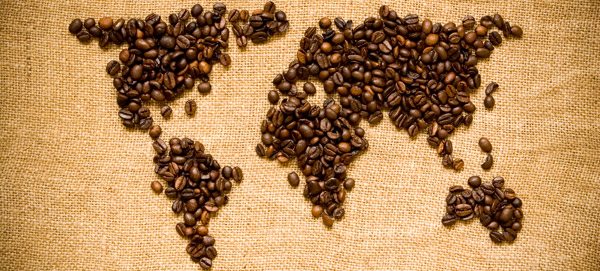Worldwide Coffee and What It Tastes Like!
Tuesday, September 2, 2014

Coffee is grown around the world and the location the coffee originates from changes the taste in the mug!
Coffee is produced in over fifty countries worldwide - from Aruba to Australia and Uganda to United States of America, coffee is a worldwide crop and is exported across the world.
Australia loves a good cup of coffee, so much so that in 2012 we imported $590 million worth of coffee from the rest of the world.
Brazil are the world’s largest producer of coffee as they grow over 2.25 million tonnes of coffee each year with Australia only currently making around 1600 tonnes of green bean coffee each year.
Whilst coffee isn’t a major crop in Australia, the beans produced in Australia have a definitive taste. As the southernmost coffee crop in the world, Australian coffee takes longer to grow and mature which in turn has an affect on the taste in the mug.
Australian coffee has a lower level of caffeine, it is naturally sweet and has a low level of acidity compared to other coffees from around the world. The majority of Australian coffee is exported to Europe which is a real shame. As a nation of coffee drinkers, we should start drinking our own more!
Different regions and nations have different flavour profiles and one coffee in particular has a unique flavour and making-process all of its own…
Brazilian Coffee
A nation the size of Brazil, with the sheer amount of coffee that it produces, has a variety of different flavour profiles but there are several overwhelming tastes that shape Brazilian coffee.
Brazil produces 25% of the world’s coffee and, thanks to its simplicity of taste, is easily accessible for every palate.
Low in acidity and with a nice sweetness, Brazilian coffee has some nutty notes and often has a little bit of a chocolate taste thrown into the mix too.
The majority of worldwide espresso mix features Brazilian coffee and in these mixes, the coffee is darker and a little heavier to taste.
Brazilian coffee is by far the most common across the world and is common in cafes across Australia.
Ethiopian Coffee
Legend has it that an Ethiopian goatherder in the 9th century discovered coffee after he noticed the energy his herd received after eating coffee plants and decided to give it a crack himself!
Ethiopia is the birthplace of coffee. Coffee plants grow wild in Ethiopia and have been exported from the African nation to every coffee producing country in the world.
Like Brazil, Ethiopian coffee is difficult to describe as coffee produced in different areas has a unique flavour all of its own.
The two main coffee producing areas of Ethiopia are Sidamo and Harar and each have different flavour profiles. Sidamo is a zesty, light coffee with floral even citrus flavours whilst Harar is richer and more wine-like on the palate.
Indonesian Coffee
Much darker and more earthy than other varieties, Indonesian coffee varies from island to island as different processes and climates make for a varied coffee tasting.
Complex on the palate, Indonesian coffee is often a deeper flavour than other coffee producing nations. Thanks to its high altitude, volcanic soil and history of coffee production, beans from Indonesia are highly sought after.
Some Indonesian coffee goes through a process called monsooning, where the green coffee beans are left in humid air throughout the rainy season. This process can last for up to three years and makes the coffee sweeter while reducing the acidity.
Kopi Luwak (Civet Coffee)
This is the weird one.
Kopi Luwak (or civet coffee) is one of the most sought-after (and expensive) types of coffee in the world. Sold in select Australian cafes at $50 a cup, civet coffee has an interesting process from plant to cup.
First, the coffee cherries are eaten by an Asian palm civet. They are then partially digested and erm….I think defectated is the scientific way of saying it! You may have heard of civet coffee by its more descriptive name ‘cat poo coffee.’
After that, the coffee is cleaned and roasted before it makes its way to your cup. Civet coffee prices have skyrocketed as some believe that the civet only eats the best coffee berries and that the digestion process leaves the beans in a natural state.
Sadly, with the rise of civet coffee has come the rise of animal exploitation. Wild, organic civet coffee is still available but there has been a rise in battery-farmed civet coffee which is an abhorrent practice similar to any sort of battery farming.
Civet coffee is almost bitter-less in taste but it isn’t for everyone. Coffee enthusiasts the world over have lambasted civet coffee as a gimmick that isn’t worth the price. If you happen to be a Russian oligarch or an investment banker (or have a real thing for cat poo) then give civet coffee a go! If not, stick to the normal stuff!
Interested in learning more about coffee? Try our Barista Course and learn how to make the perfect cup of coffee along with latte art!




